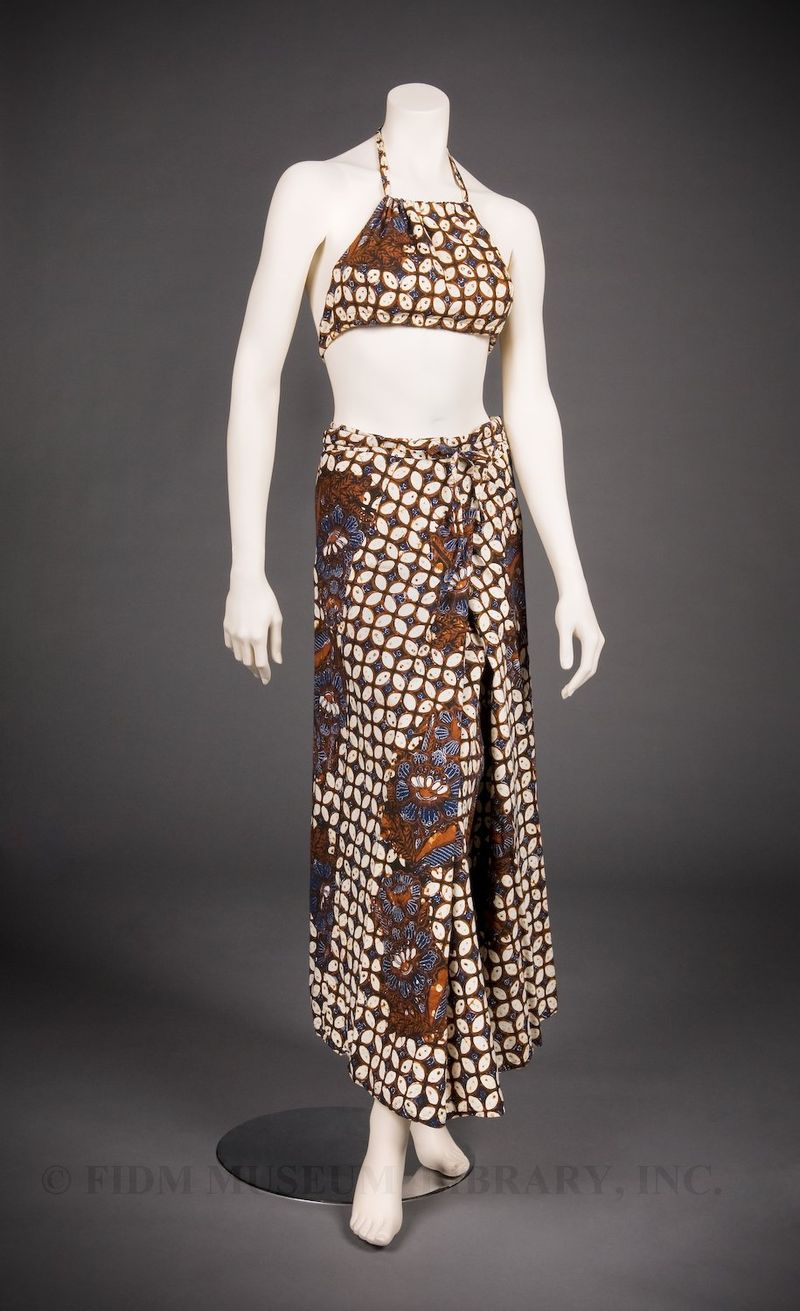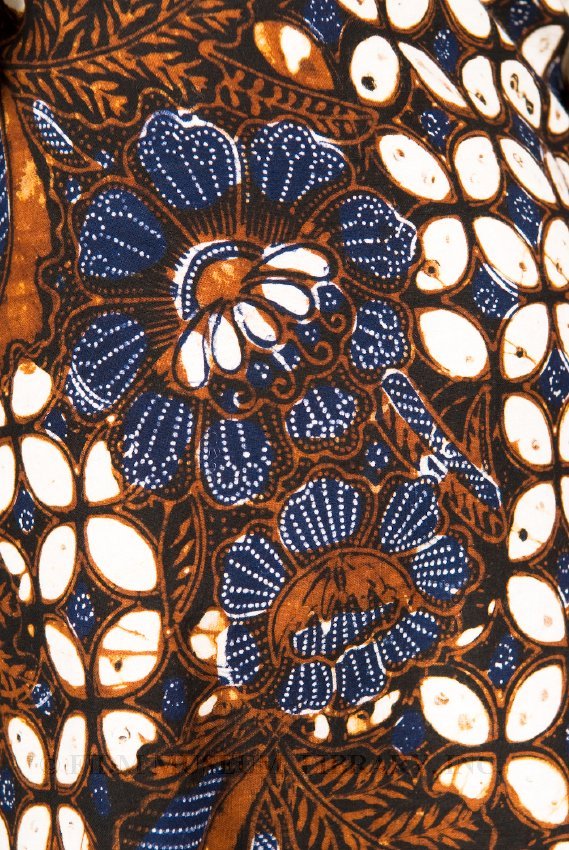Nineteen-sixties hippie culture was based on the rejection of "straight" culture, i.e. mainstream culture that oppressed the individual. In sartorial terms, this meant that hippies rejected contemporary, mass-produced, off-the-rack garments. Instead, hippies preferred garments that expressed individuality and signaled a rejection of "the system." This view is encapsulated in the words of a young model named Sarah who was featured in the April 1, 1968 issue of Vogue. A pictorial spread showcased highlights of Sarah's wardrobe, including a Moroccan djellaba, an 1880s velvet and silk day dress and a gauzy white cotton gown. Sarah summed up her unusual style with the comment, "nothing nice ever happens to me in my straight clothes."
 Halter and wrap-skirt ensemble
Halter and wrap-skirt ensemble
c.1970
Indo Archipelago
80.431.1AB
Gift of Mrs. Gerald Labiner
Sarah's wardrobe choices illustrate the hodge-podge aesthetic of hippie style. Given the difficulty of creating an entirely new manner of dressing, hippie dress often incorporated aspects of historic and/or non-western dress. Because they existed outside the realm of late 1960s western society, these sartorial viewpoints were believed to have an authenticity and moral purity that didn't exist in straight fashion. Historic and non-Western garments could be purchased at flea markets, military surplus stores or while on the 1960s version of the Grand Tour through the Middle East, Latin America or South Asia. The label inside this batik ensemble reads "Indo Archipelago," suggesting it was probably purchased either in Indonesia or via a US importer of Indonesian batik.
Batik is a method of resist dyeing that uses wax as a dye barrier. To create batik designs, hot wax is applied to a foundation fabric (generally cotton or silk) and then dyed. The wax coating prevents the dye from penetrating the fabric so that when the wax is removed, it contrasts with the dyed area. Depending on the intricacy of the design and the number of colors used, the process of waxing and dyeing is repeated many times. Though batik is found in many cultures, the batik designs of Indonesia are often considered the most sophisticated examples of this artistic form.
 80.431.1AB
80.431.1AB
Two-piece ensembles including a skirt or pants and halter or bra top were popular in the late 1960s. Within our collection, we have several examples of this style, including a 1969 silvery-gray metallic brocade and machine lace Galanos pants, bra and jacket ensemble. Both ensembles bare the midriff, but weren't necessarily meant to be worn at the beach. Other examples of sexually provocative 1960s clothing include sheer blouses and Rudi Gernreich's topless bathing suit of 1964. This willingness to expose previously hidden areas of the body suggests the ways in which both sartorial and social mores shifted during the 1960s.



I have about thirty chunky wooden stamps with designs cut into them. They are all beautiful and have amazing patterns – works of art on their own. I’ve always known them as batik stamps, but they are not copper. I don’t know where they are from as I’ve always purchased them on etsy or at flea markets…do you happen to know anything about them? Are my stamps Indonesian too? Are there any clothing pieces in the FIDM collection that were created with wooden batik stamps?
I’m certainly not an expert on batik stamps, but from what I learned researching this post, stamped batik isn’t unique to Indonesia. It would be the design (and possibly the wood itself) that would tell you where your batik stamps are from. There are a number of great books on batik; check your local library to see what they have on the topic!
nice batiks….love it